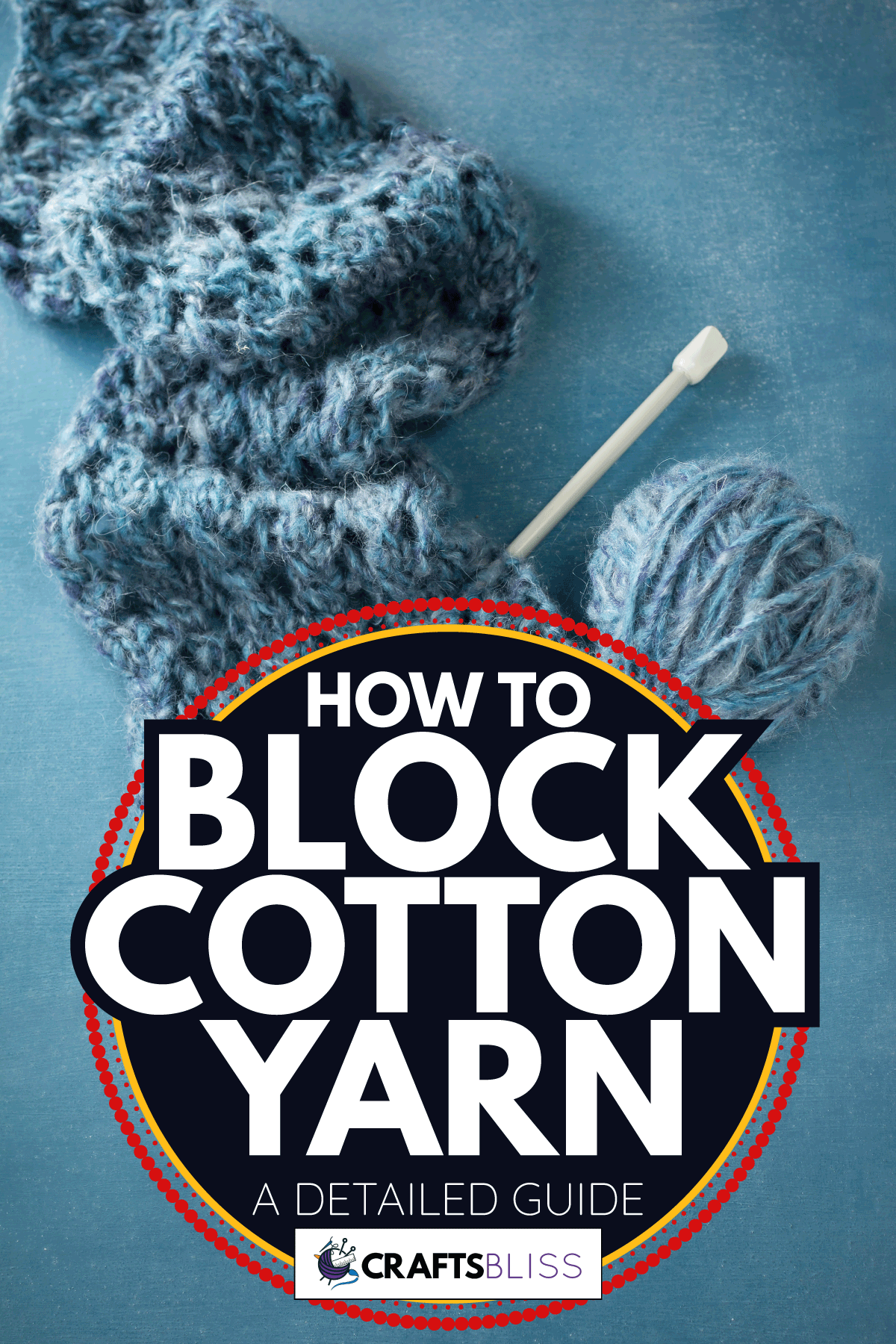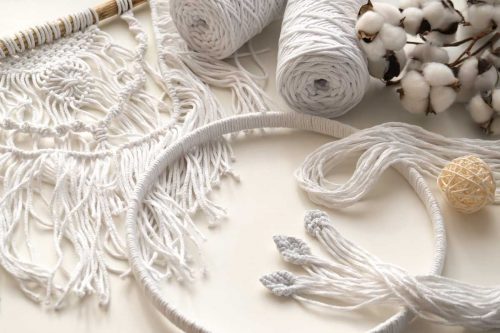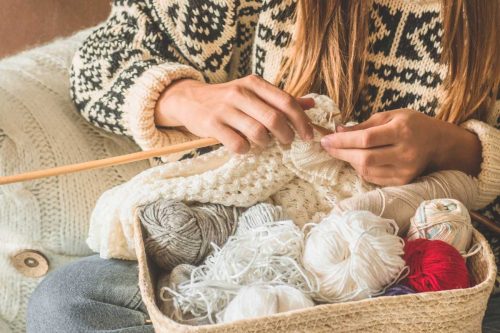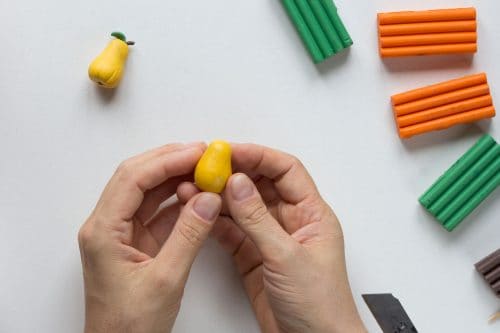Have you worked with cotton yarn? It is a soft, versatile material that can create everything from home decorating items to garments. There are a few things to remember when working with cotton. You may have heard the term "blocking" used when working with various types of yarns. Blocking refers to the process of shaping a finished knit or crocheted piece into its final shape. Blocking is particularly important in lacy projects. The blocking process opens up the beauty of the lacework. For your convenience, we've put together a guide on how to block cotton yarn.
To wet block a cotton yarn project, use the following steps:
- Soak the piece in a bucket, tub, or sink full of cold water.
- Gently stir the piece but don't agitate it.
- Soak for about 5 minutes.
- Drain the water and rinse until water runs clear.
- Carefully lift the piece out of the water onto a towel. Support the piece to avoid it sagging under its own weight.
- Lay the piece on a towel, gently shaping it into the form you want to have when finished.
- Roll up the towel, squeezing as much water as possible from the piece.
- Unroll the towel and place the piece on a blocking mat.
- Gently shape and press the piece to the desired shape and dimensions, using pins to hold it in place.
- Leave the piece on the blocking mat until it has dried.
- Remove the pins and remove the piece from the blocking mat.
Blocking is an important final step when you are knitting or crocheting. It evens out stitches and settles everything into place. Cotton does not have "memory" to a finished piece, so blocking each time it gets wet will help it maintain the correct shape. Keep reading to learn all about blocking your projects created with cotton yarn.

The magic of blocking
Blocking knitted and crocheted items is a key step in producing a beautifully finished piece. The blocking process ensures that the size of your item is correct and gives definition to your stitches, making them stand up and fluff out. Blocking is particularly important for garments and lace pieces. Blocking garments ensures that the pieces will fit together properly and hand correctly in the finished item.

Lace benefits from blocking as it helps open up the lacework. When the lace is blocked, you can see the detail of the stitches and openings in more detail. Shawls that are blocked will drape more softly and maintain the desired triangle shape.
Methods of blocking
The wet blocking immersion method described above is the most common method of blocking. However, steam blocking is another option. Natural fibers such as cotton respond well to steam blocking. To steam block, you'll use your iron. We'll describe steam blocking in detail later in this article.
Spray blocking is another option for blocking cotton yarn. To spray block, place your piece on a towel over a flat surface. Mist the item with a spray bottle and gently stretch it into the desired shape. Pins can be used to hold the item in the right shape as it dries. Let the piece air dry before removing the pins.
Make sure that any pins you use when blocking are rust-proof. You'll be pinning your project while damp or wet and want to make sure the pins will not leave any discoloration on the item.
At times, you may need to block a large item, such as a blanket or afghan. If your item is too large for a blocking board, you can pin it on a mattress covered in towels or a carpet.
Click here to see this blocking board kit that includes pins on Amazon.
Click here to see these rust-proof blocking pins on Amazon.
Do you have to block cotton yarn?
Because cotton yarn does not have memory (it won't return to its shape), it should be blocked. If you create a garment, blocking is essential to match up the seams and ensure the correct size. Even small items such as a dishcloth can benefit from blocking. Blocking will make sure the item is square and neat.
There may be items that you decide not to bother with blocking. For instance, amigurumi, which creates small knitted or crocheted stuffed toys, is not critical to block. Another example would be an option such as a slouch hat. A hat knitted in the round that is fairly shapeless would not be critical to block.
What does blocking yarn mean?
Blocking yarn refers to stretching a shaping of a knitted or crocheted piece to the desired finished shape and dimensions. There are three possible methods of blocking:
- Wet blocking
- Steam blocking
- Spray blocking
In this YouTube video, all three methods of blocking are demonstrated:
How do you block cotton yarn when crocheting?
Cotton yarn responds very well to wet and steam blocking. Wet blocking is a process that completely soaks the project and then allows it to dry in the desired shape. In steam blocking, you'll use your iron and a damp cloth to create steam while stretching and shaping the project. A complete description of how to steam block is described next.
How do you steam block cotton yarn?
To steam block cotton yarn, follow these directions:
- Lay the item on a towel on a flat surface.
- Place a cool, wet washcloth over the item.
- Heat your iron to the cotton setting.
- Press your iron to the washcloth for a few seconds, creating steam.
- Repeat as necessary, moving and rewetting the washcloth as needed.
- Pull your item into the proper shape while steaming.
- Allow the item to air dry.
- Pin to a blocking board if needed.
This video will show you how to steam block an item:
Does cotton yarn stretch when blocked?
Cotton yarn is not very stretchy while you are working with it. However, it can be shaped and stretched during blocking. Blocking will allow you to gently stretch the item and shape it to the correct finished dimensions. Be careful if you are using the wet blocking technique, as the project will be very heavy when lifted out of the soaking bath and can stretch quite a bit until the water is wrung out with a towel.
The finishing touch
Blocking is the final step to creating a fully finished project. The blocking process gives your finished item shape, structure and defines the stitch pattern. Garments and lacework, in particular, are essential to finish by blocking. Choose the method of blocking that you like best. Wet and steam blocking work very well for items created with cotton yarn. Cotton yarn is a great choice for home decoration pieces as well as garments. Blocking any of your projects provides the finishing touch.
If you are wondering if you'll need to block your project each time you wash it, our article Do You Need to Block Crochet and Knitting after Every Wash? will guide you on how to care for your projects after laundering.
Do you have older crocheted items that have shrunk over time? In our article, Does Crochet Shrink? [and How to Unshrink it], you'll learn how to use the magic of blocking to resize items that have gotten smaller with use.







![Read more about the article What Is The Best Paper To Make Flowers? [4 Suggestions]](https://craftsbliss.com/wp-content/uploads/2020/11/Colourful-handmade-paper-flowers-on-pink-background-500x333.jpg)
